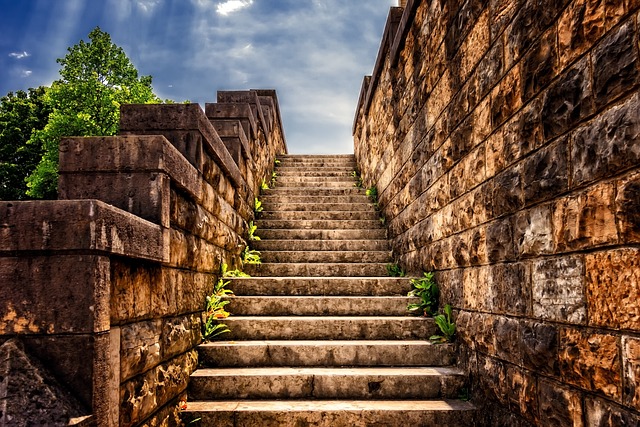What is Botanical Cyanotype Printing?
Botanical cyanotype printing is a camera-less photographic technique that harnesses UV light (like sunlight) to produce intricate, silhouette-style prints in a distinctive Prussian blue. Developed in the 19th century, it's a wonderfully accessible, non-toxic way to create art directly from natural forms. Imagine using sunlight to 'photograph' the delicate details of leaves and flowers onto paper or fabric.
The Magic Chemistry: From Green to Blue
The cyanotype process hinges on the light-sensitivity of two iron compounds: Ferric Ammonium Citrate and Potassium Ferricyanide. When mixed and coated onto a surface, they remain relatively stable in low light. However, exposure to UV light triggers a chemical reaction: the ferric iron (Fe³⁺) in the citrate is reduced to ferrous iron (Fe²⁺). This ferrous iron then reacts with the ferricyanide to form the insoluble, intensely colored pigment ferric ferrocyanide – commonly known as Prussian blue. The unexposed, water-soluble chemicals are simply washed away, revealing the blue image against the background. Best of all? No darkroom needed!
Gathering Your Alchemist's Kit
Ready to start? Here’s what you'll need. Chemicals are often sold in kits or available from photographic suppliers:
- Ferric Ammonium Citrate (Green form preferred for sensitivity)
- Potassium Ferricyanide
- **Distilled** Water (Tap water can interfere with the chemistry)
- Two non-metallic measuring containers & stirring rods (glass or plastic)
- Two opaque storage bottles (brown or black plastic/glass)
- Substrate: Watercolor paper (heavyweight recommended), cotton or silk fabric (pre-washed)
- Coating Tool: Soft brush (hake brush) or foam brush
- Contact Frame or simple setup: Piece of glass or clear acrylic sheet, rigid backing board (like cardboard or wood)
- Clips (binder clips work well) or weights
- Protective Gear: Nitrile gloves, apron or old clothes
- Botanicals: Freshly picked or pressed leaves, flowers, ferns, grasses
- Measuring scale (grams)
- Small non-metallic dish for mixing sensitizer
Your Step-by-Step Sun Printing Journey

- **Prepare Stock Solutions (Dim Light/Indoors):** Wear gloves. Carefully measure and dissolve 25g Ferric Ammonium Citrate into 100ml distilled water (Label: Solution A). In a separate container, dissolve 10g Potassium Ferricyanide into 100ml distilled water (Label: Solution B). Stir gently until fully dissolved. Store solutions in separate, labeled opaque bottles away from light. They can last for months.
- **Mix the Sensitizer (Dim Light):** In your small non-metallic dish, mix *equal* parts of Solution A and Solution B just before coating. Only mix what you need for the session, as the mixed sensitizer degrades faster.
- **Coat Your Surface (Dim Light):** Lay your paper or fabric flat. Using your brush, apply the sensitizer smoothly and evenly. Avoid puddling. Work relatively quickly. Let it dry completely in a dark, ventilated place (e.g., a closet or drawer). This can take an hour or more depending on humidity. Dry horizontally.
- **Compose Your Artwork:** Once completely dry (surface should feel smooth, not tacky), arrange your chosen botanicals directly onto the yellow-green coated surface. Think about shapes, overlaps, and negative space.
- **Expose to UV Light:** Place your arrangement on the backing board, carefully lay the glass/acrylic sheet over the botanicals to ensure firm contact, and secure with clips. Take it outside into direct sunlight or use a UV lamp. Exposure time varies greatly (5 minutes to over an hour) depending on sun intensity, time of day, and desired effect. The exposed area will typically shift from yellow-green towards a grey, bronze, or darker blue-grey color. Making test strips is highly recommended!
- **Wash and Develop:** Bring your print indoors, remove clips, glass, and botanicals. Immediately rinse the print under a gentle flow of cold running water. Wash for at least 5 minutes, or until all the yellow/unexposed sensitizer washes away and the water runs clear. The blue color will intensify dramatically during washing.
- **Oxidize and Dry:** (Optional but recommended) Briefly immerse the print in a tray of water with a splash of hydrogen peroxide (3%) to accelerate oxidation and achieve the final deep blue quickly. Rinse again briefly. Hang your print or lay it flat on a clean screen or towel to dry completely, preferably away from direct sunlight.
Tips for Exquisite Cyanotypes
- **Fresh vs. Pressed:** Fresh plants offer unique 3D textures, while pressed plants give sharper silhouettes. Try both!
- **Good Contact is Key:** Ensure plants are pressed firmly under the glass for crisp edges. Heavy glass or extra weights help.
- **Play with Translucency:** Thin petals or leaves might allow some light through, creating subtle tonal variations.
- **Consider Double Coating:** For richer blues, apply a second coat of sensitizer (drying completely between coats).
- **Experiment Beyond Botanicals:** Try lace, feathers, stencils, or even photographic negatives.
- **Pre-wash Fabrics:** Remove any sizing or chemicals from fabric before coating for better absorption.
- **Embrace Imperfection:** Streaks, drips, and unexpected results are part of the charm of this handmade process.
Dive Deeper: Resources & Community
Inspired to learn more? Check out these excellent resources and consider joining online forums or local workshops: